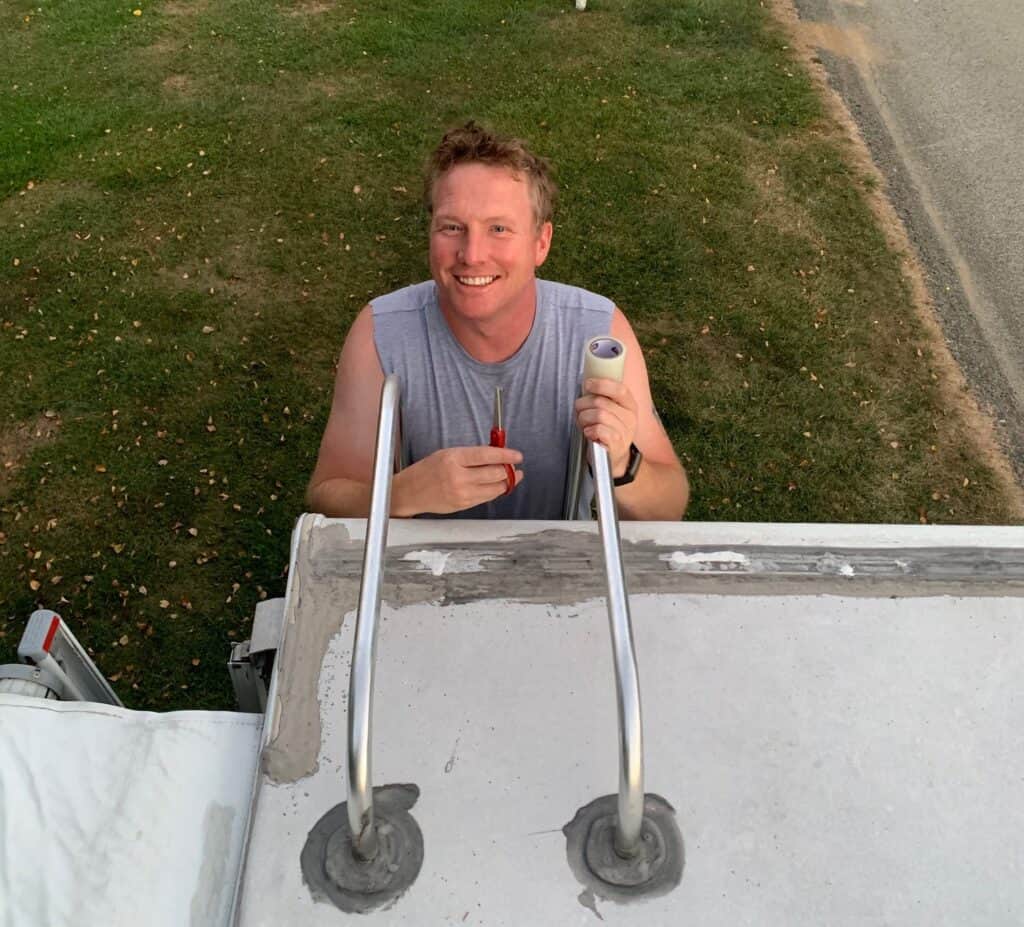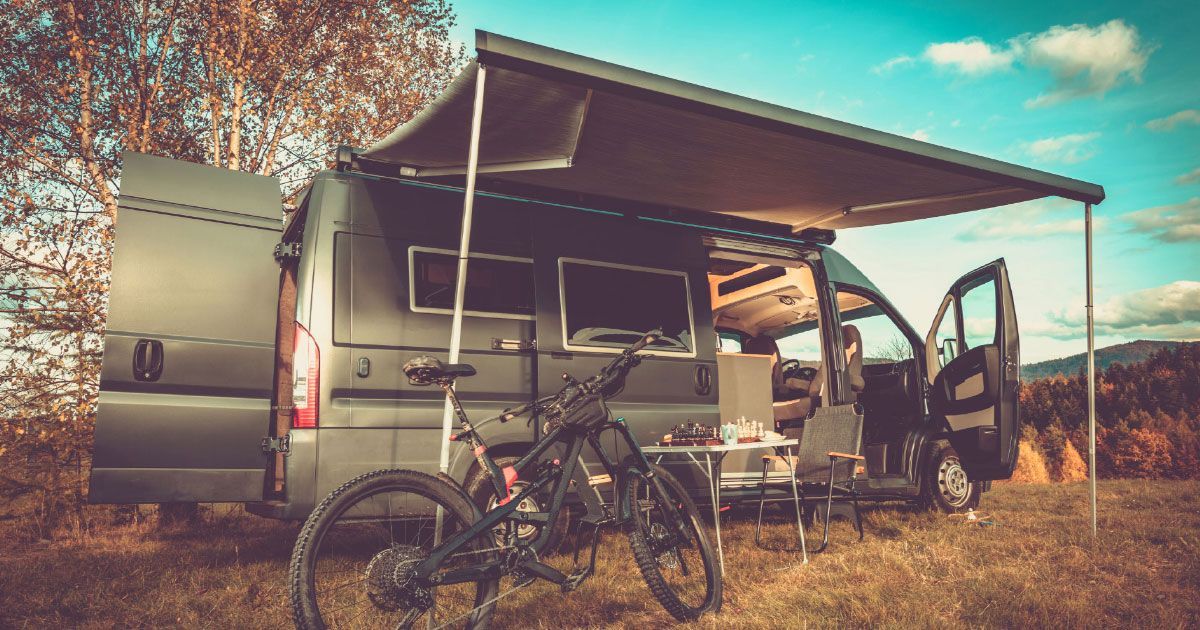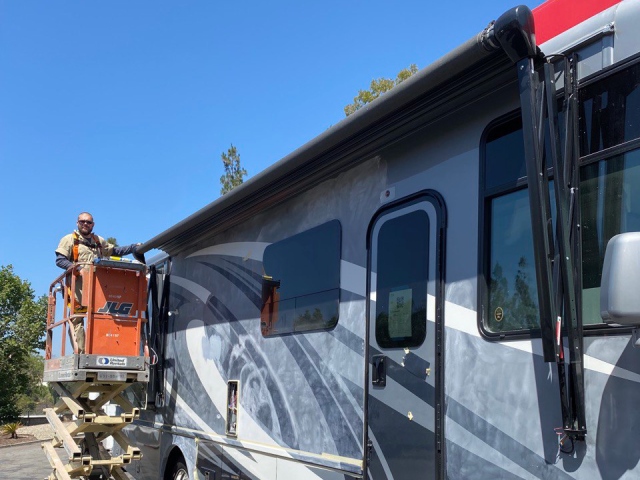All Categories
Featured
Table of Contents
- – Camper Service Near Me Irvine, CA
- – OCRV Center
- – Camper Service Near Me Irvine, CA
- – Pop Up Camper Repair Irvine, CA
- – Camper Trailer Repair Near Me Irvine, CA
- – Camper Repair Shop Near Me Irvine, CA
- – Rv Camper Ac Repair Irvine, CA
- – Pop Up Camper Repair Irvine, CA
- – Camper Repair Irvine, CA
- – Camper Service Center Irvine, CA
- – Camper Repair And Service Irvine, CA
- – Camper Service Near Me Irvine, CA
- – Camper Service Center Irvine, CA
- – OCRV Center
Camper Service Near Me Irvine, CA
(I didn't have the securing knobs tightened down.) I didn't see anything wrong, yet pulled back both awning just to be risk-free. Many campers around us had their awnings released. We returned home the other day in the rain, so today I released the awnings to dry them out. That's when I discovered that the gutter had actually been drawn away from the wall surface (and downspout was missing) on the ideal hand end of the front awning.
It shows up that concerning 18 to 24 inches of the steel extrusion (gutter) that the awning is slid into has pulled away from the wall surface and twisted a little bit - Irvine Camper Repair Shop. I'm presuming the repair will require replacing that whole length of rainfall gutter (10 feet?) and probably utilizing larger scale screws to change those that were pulled out
We've obtained busted brackets on our camper awning. Two months earlier, we had a negative tire blow-out that caused a curved axle, significant repair services, etc, and we wonder if the braces cracked/broke throughout the bouncy experience before we recognized the axle was in difficulty. We haven't had the awning out given that it was in the store to be fixed.
Camper Service Near Me Irvine, CA
The awning itself, springtime mechanism, etc, is great. The rear brace setting up is fine, but the front one is split at the base and entirely appeared at the top, to make sure that the leading assistance arm no more attaches to the camper. We are in difficulty. I don't want/like to camp without it.
Does this sound affordable? Even the real support arms are intact. They are white steel (? aluminum?) and the braces are a much heavier grey metal - it's the gray little bits that have cracked/broken. The actual arms are completely normal/functionalI'm just wanting to make certain we're not being taken in out of our despair.
Pop Up Camper Repair Irvine, CA
The RV is a 2007, however we had rainfall damages in 2010 and the entire awning was brand new at that time. If nothing else, we would certainly such as recommendations as to how we can "jerry gear" this for a while - possibly even obtain us through the summer - without having to place in a brand new awning!
If we need to go awning-less, we will, yet I prefer to discover a fast and effective remedy. Anybody? Please!.
!! I'm on step 5 of replacing the roof of my '93 Fleetwood Jamboree Searcher motorhome. In order to eliminate the fourth one, I require to eliminate the RV awning.
In order to replace the rubber roofing system and roof outdoor decking, I need to eliminate the awning. My RV awning has legs which pivot at the base however can be eliminated to establish on the ground. Initially I drew these out. Pressing this lever launches the foot of the awning legs.
Camper Trailer Repair Near Me Irvine, CA
You'll likewise see exactly how the bracket is hooked on top of the trim molding that holds back the fiberglass panel in the back corner. That's why the awning needs to come off first prior to the final steps of this post (exposing the front and back sides of the roof covering outdoor decking).
Right here's an information of just how the awning placing braces are screwed into the camper. I didn't really need to do this action till the awning got on the ground but I saw this set screw here holding the awning canvas into the awning rail (there's one more at the appropriate end of the awning.) I proceeded and loosened it.
Once both screws are removed, just draw back on the bracket. Unscrewing the huge lag screws that hold the recreational vehicle awning placing braces to the camper (with an outlet wrench) Getting rid of the mounting bracket once the lag screws have been unscrewed. Note exactly how this end was hooked over the termination bar that secures the rounded corner at the rear of the roofing.
Both lag screws removed from the awning installing bracket on the. Eliminating the installing brace of the awning.
Camper Repair Shop Near Me Irvine, CA
To replace the roofing system, this awning bar needs to be removed. If you're just changing your awning and not repairing the entire roof like me, after that you would not need to get rid of the awning rail.
Dropping the legs a few notches to reduce the whole awning. Currently I can reach this trim molding (the awning rail) quickly.
You may have to cut the end with an energy blade if it is wrapped under. Simply pull it out!
Once the screws were out I began prying up the awning rail. When I began to tear off the awning rail, the whole thing all of a sudden broke off and rolled up into the awning like a home window blind.
Rv Camper Ac Repair Irvine, CA
Once the screws are eliminated, the awning rail can be torn up. As soon as you start pulling the awning rail away it will unexpectedly break complimentary and roll up like a home window blind with the awning.
This point is hefty so if you're working alone like me after that decrease it the ground gradually by strolling the legs far from the camper on each side one by one until you can lay it on the ground. After that I flipped the legs back up and out of the means versus the camper.

Then I leaned the legs back versus the camper. When the awning was on the ground I got rid of the little set screw at the appropriate end of the awning, (I got rid of the one at the left end earlier.) These screws keep the awning canvas from sliding in the rail. Once they're gotten rid of the rail simply glides right off the canvas by gliding the entire rail away.
Pop Up Camper Repair Irvine, CA
Once the 2 set screws were eliminated I can slide the entire awning rail right off the awning. One more look at the account of this trim molding (the awning rail) after it was gotten rid of.
The following point holding down the rv fiberglass exterior siding panels is the corner trim molding revealed here. It has a plastic screw cover strip put, so once again I simply tore up the vinyl insert and pulled out sufficient so I could unscrew some screw heads.
Nevertheless I might end up removing it later on if I need to replace the luan plywood beneath this fiberglass shift. The roofing system decking plywood expands under the fiberglass skin at the rear of the camper. In order to change it, this fiberglass shift must be lifted. To lift that, the corner molding need to be removed.
Then I might swing the trim mold and mildew off the side enough to raise the side of the fiberglass panel. As soon as I could swing that item of edge molding off the side, I started to tear up the fiberglass panel. It has adhesive under it and little bits of rusted staples and sheared off screws still holding it in place.
Camper Repair Irvine, CA
At that point I changed from a scrape to 6 inch wide taping knife. I loosened up the various other edge trim in the very same method, and bent it sideways just enough so that I could lift up the side of the fiberglass panel.
I located a bunch of water damages in the plywood under the fiberglass panel so I'll probably be replacing it. Which implies I'll finish eliminating those corner trim items completely down after all. However we'll reach that later. I had a significant quantity of water damages in the joint between the rounded corner and the roofing deck.
Camper Service Center Irvine, CA
The side of the roof decking is exposed at the back of the camper! I've revealed the roof covering substrate at the back edge of the camper. Now its time to locate the front edge.
Once more, I pried that layer up also (there had not been much holding it down however glue at this point) and after that I could tug out the remainder of the rubber roofing that was glued underneath it. Currently I can take out the last little bit of rubber roofing from underneath the fiberglass and luan plywood.
Camper Repair And Service Irvine, CA
I noticed there were no fasteners holding the roof plywood down. It was simply glued. I began very carefully peeling it up. I could see the blue styrofoam insulation below the damaged areas of luan plywood on the roofing system. Notification there are no bolts in any way holding back the roofing system plywood! It is completely glued.
Once I scuffed up some of the busted bits I obtained hold of a strong item of plywood and started to draw. The entire point started to draw up cleanly in one item without damaging the foam board insulation at all.
There is a steel strengthened tape under that joins the assemble. I don't know just how specifically they managed to adhesive every little thing down so well and obtain this tape joining them from the underside, yet it was nicely done. The items of roof ply are signed up with with each other at the joints beneath with a metal-reinforced tape.
Camper Service Near Me Irvine, CA
I rapidly realized the roofing system was losing stamina and stiffness as I brought up the leading layer, so cracked it off simply prior to the initial joint. A close of the steel framing in the roofing system: one inch wide, one and a fifty percent inches high. Below's a detail of the electrical wiring in the insulation foam and the strong wood supports where the antennas screw right into the roof.

I located a lot of water damage in the plywood under the fiberglass panel so I'll most likely be changing it. I had a substantial quantity of water damage in the joint between the rounded edge and the roof covering deck.
The side of the roof outdoor decking is subjected at the back of the camper! I've exposed the roof substrate at the back edge of the camper. Currently its time to locate the front side.
Once again, I pried that layer up also (there had not been much stifling however glue now) and after that I could tug out the remainder of the rubber roof covering that was glued underneath it. Irvine Camper Repair Shop. Now I can take out the last little bit of rubber roof covering from underneath the fiberglass and luan plywood
Camper Service Center Irvine, CA

I saw there were no bolts holding the roof plywood down. It was just glued. I began carefully peeling it up. I can see the blue styrofoam insulation under the damaged areas of luan plywood on the roof. Notice there are no fasteners whatsoever holding down the roof plywood! It is totally glued.
When I scraped up some of the busted bits I obtained hold of a strong item of plywood and began to pull. The whole thing started to pull up cleanly in one item without damaging the foam board insulation at all.
There is a steel reinforced tape under that joins the assemble. I do not understand just how specifically they handled to glue every little thing down so well and obtain this tape joining them from the underside, however it was well done. The items of roofing system ply are collaborated at the joints underneath with a metal-reinforced tape.
I swiftly realized the roofing system was shedding strength and stiffness as I pulled up the leading layer, so broke it off prior to the initial joint. A close of the steel framing in the roof: one inch wide, one and a fifty percent inches tall. Here's a detail of the electrical wiring in the insulation foam and the strong wood reinforcements where the antennas screw into the roof covering.
Camper Trailer Service Near Me Irvine, CARv Camper Repair Irvine, CA
Pop Up Camper Repair Near Me Irvine, CA
Camper Repair Irvine, CA
Camper Repair Shop Irvine, CA
Pop Up Camper Roof Replacement Irvine, CA
Camper Roof Repair Irvine, CA
Camper Repair Places Near Me Irvine, CA
Camper Repair Shop Irvine, CA
Camper Repair And Service Irvine, CA
Rv Camper Ac Repair Irvine, CA
Camper Service And Repair Irvine, CA
Pop Up Camper Repair Near Me Irvine, CA
Camping Repair Near Me Irvine, CA
Camping Repair Near Me Irvine, CA
Camper Roof Repair Irvine, CA
Pop Up Camper Canvas Repair Irvine, CA
Camper Repair Near Me Irvine, CA
Camper Repair And Service Irvine, CA
Rv Camper Ac Repair Irvine, CA
Rv Camper Ac Repair Irvine, CA
Camper Repair Shop Irvine, CA
Pop Up Camper Repair Irvine, CA
Camping Repair Near Me Irvine, CA
Camper Repair Irvine, CA
Camper Repair Irvine, CA
Pop Up Camper Roof Replacement Irvine, CA
Camper Repair Irvine, CA
Camper Repair Near Me Irvine, CA
Camper Trailer Service Near Me Irvine, CA
Camper Service And Repair Irvine, CA
Camper Roof Replacement Irvine, CA
Camper Trailer Repair Near Me Irvine, CA
Camper Roof Repair Near Me Irvine, CA
Camper Trailer Repair Near Me Irvine, CA
Pop Up Camper Roof Replacement Irvine, CA
Pop Up Camper Canvas Repair Irvine, CA
Camper Roof Repair Near Me Irvine, CA
Camper Repair Places Near Me Irvine, CA
Camper Repair Near Me Irvine, CA
Camper Awning Replacement Irvine, CA
Camper Repair Irvine, CA
Camper Repair Shops Near Me Irvine, CA
Camper Repair Shop Near Me Irvine, CA
Camper Air Conditioner Repair Near Me Irvine, CA
Camper Trailer Repair Near Me Irvine, CA
Camper Service And Repair Irvine, CA
Rv Camper Repair Irvine, CA
Camper Repair Irvine, CA
Camper Repair Irvine, CA
Camper Awning Replacement Irvine, CA
Camper Repair Places Near Me Irvine, CA
Camper Repair And Service Irvine, CA
Rv Camper Ac Repair Irvine, CA
Camper Awning Repair Irvine, CA
Rv Camper Repair Irvine, CA
Camper Service Irvine, CA
Pop Up Camper Roof Replacement Irvine, CA
Camping Repair Near Me Irvine, CA
Rv Camper Repair Irvine, CA
Camper Trailer Repair Near Me Irvine, CA
Camper Air Conditioner Repair Near Me Irvine, CA
Camping Repair Near Me Irvine, CA
Camper Repair Shop Near Me Irvine, CA
Camper Repair And Service Irvine, CA
Camper Repair Shops Near Me Irvine, CA
Camper Service Near Me Irvine, CA
Camper Repair Places Near Me Irvine, CA
Camping Repair Near Me Irvine, CA
Camper Service And Repair Irvine, CA
Camper Repair Places Near Me Irvine, CA
Camper Service Center Irvine, CA
Camper Roof Repair Irvine, CA
Camper Air Conditioner Repair Near Me Irvine, CA
Camper Repair And Service Irvine, CA
Camping Repair Near Me Irvine, CA
Camper Services Irvine, CA
Camper Repair Places Near Me Irvine, CA
Best Seo Near Me Irvine, CA
Finding A Good Top Seo Company Irvine, CA
OCRV Center
Table of Contents
- – Camper Service Near Me Irvine, CA
- – OCRV Center
- – Camper Service Near Me Irvine, CA
- – Pop Up Camper Repair Irvine, CA
- – Camper Trailer Repair Near Me Irvine, CA
- – Camper Repair Shop Near Me Irvine, CA
- – Rv Camper Ac Repair Irvine, CA
- – Pop Up Camper Repair Irvine, CA
- – Camper Repair Irvine, CA
- – Camper Service Center Irvine, CA
- – Camper Repair And Service Irvine, CA
- – Camper Service Near Me Irvine, CA
- – Camper Service Center Irvine, CA
- – OCRV Center
Latest Posts
Cap And Gown Senior Pictures Orange County
Ontario Graduation Pictures Photographers Near Me
Anaheim Hills High School Senior Photography
More
Latest Posts
Cap And Gown Senior Pictures Orange County
Ontario Graduation Pictures Photographers Near Me
Anaheim Hills High School Senior Photography